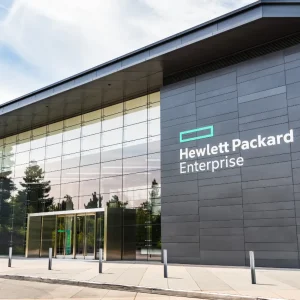
Google this week opened a $730m data centre in Denmark, making it the latest hyperscaler heading to the Nordic country ranked the best place in the world to build data resources in the new Data Centre Ranking 2020, created by our sister title Investment Monitor. The ranking is dominated by the Nordic nations, emphasising the appeal of the region for the sector.
Denmark has come out on top in the index, which measured countries around the world on 29 benchmarks covering security, IT and energy infrastructure, and business environment, to find the world’s best location for data centres. With an overall score of 78.70, it narrowly came out ahead of neighbour Sweden (78.25). Another Nordic country, Finland was fifth (75.39) with the US and Netherlands third and fourth respectively.
Norway is sixth, meaning four of the top six locations are in Northern Europe.
“The Nordics has really become the go-to market for data centres,” says Fredrik Jansson, the chief strategy officer at DigiPlex, an American-owned business that runs data centres in locations including Denmark and Sweden.
“I think we’re just at the start of a wave of data coming to the region.”
The best place in the world to build a data centre: Denmark
Though competition was fierce, Denmark’s superior infrastructure and cybersecurity standards give it the edge over rivals, according to our index.
It gets 10/10 in the IT infrastructure category, boasting the world’s fastest average download speeds (107.7Mbps) and 277,134 secure internet servers per million people, more than double its nearest challenger.
Denmark also ranks top on security, scoring 9.69/10 thanks to the low number of cyberattacks and high internet privacy levels it offers, while the quality of its supporting infrastructure – the volume and type of power on offer, as well as the availability of land and water supply – is also key to it taking number one spot. It scores 9.4 out of 10 for support infrastructure.
“A lot of preparation has also taken place at region, state and city level,” says Oskar Almen, partner for energy and utilities at PA Consulting, when asked about the success of Denmark and its neighbours.
“Places have been identified which could make a good spot for a data centre, the land has been zoned and the infrastructure has been updated to fit in with operator requirements. I think this level of preparedness is attractive to the major players.”
This reflects in part a desire by the Danish government to attract the biggest players in the data centre space, which has led to it working with private sector partners to build out infrastructure, while the country’s low-cost and well-developed renewable energy base is also a big draw.
Denmark’s Jutland peninsula is the landing point for the HAVFRUE (Danish for mermaid) subsea cable which connects data centres in Europe with the East Coast of the US and has a capacity of 108Tbps. Opened last year, it was built by a consortium including Facebook and Google, with AWS latterly joining the party, buying capacity in the pipeline.

Fredericia, site of Google’s new data centre, sits on the south-east of the Jutland peninsula so it’s well placed to connect to HAVFRUE. The company claims the site will be carbon-neutral from the outset, having offset its electricity use by investing in five photovoltaic solar farms in Denmark, capable of generating 160MW, said to be more than the data centre’s consumption.
“In Fredericia, we’ve found a great business community and a location with existing infrastructure that fits what we’re looking for when we set out to build an efficient, modern data centre,” said Joe Kava, Google VP for global data centres, when the site was announced.
Nordic data resources on the rise
With the size of the global data centre market expected to grow to $62.3bn by 2022, almost doubling in five years (2017 size: $31.5bn), the Nordic region is likely to remain a popular location in the fast-growing sector.
“We’ve seen dramatic uptake in the ‘server space’ segment, where companies like Google and Facebook are storing information in Nordic data centres,” says PA’s Almen, who has worked with companies in the data centre space for a decade.

“For these companies the most important thing is low energy prices. Latency is important too, but with their applications, a few milliseconds doesn’t make much difference.”
When it comes to energy, Almen says the well-established ‘district heating’ systems deployed in Denmark and other Nordic countries, which use energy generated at a central location to heat nearby homes and commercial properties, are a big draw. They allow data centre providers to turn their waste heat into a desirable resource, which means bills are low.
“A lot of companies are trying to build these circular systems where you put water in to cool the equipment, and use the resulting warm water in a heating system,” he says.
“This is where the Nordics have an advantage over countries at the moment, but you could see them being developed in other places too, at least on a micro level. A data centre could be connected to an individual building complex to supply its heat.”
The future of data centres: will the Nordics retain their edge?
DigiPlex is planning to continue its investment in sites across the Nordics and Jansson says the region is ready to take advantage of overheating in what are known in the industry as the FLAP markets – Frankfurt, London, Amsterdam and Paris.
“We’ve seen a lot of investment in the FLAP markets over the last three-five years, but that creates problems downstream,” he says. “They’re all running out of power and space. Amsterdam put a ban on new data centres because they’re hogging all the power.”
(Amsterdam is actually planning to lift its data centre ban, which was introduced last year, but new developments will be limited in terms of location and scope.)
Jansson adds that his company is looking to develop new sites as part of data centre campuses to encourage innovation and sharing of ideas and resources within the ecosystem.
“In the physical world, the more brilliant minds you have in one place, in a university or tech cluster, the better the outcome will be,” he says. “The same kind of logic applies in a campus of data centres.”
Almen says companies considering whether to invest in data centres in Northern Europe should consider what purpose their centre will serve.
He says the Nordics are unlikely to ever fully replace on-location data centres in financial hubs like Frankfurt and London, but believes advances in high-performance computing could offer new opportunities.
“For advanced applications, like banking with robotic trading, you have a latency challenge you will never solve,” he says. “So markets that are close to the end-user, London, Frankfurt, Singapore and New York, will always have an advantage there.
“But what we’ve seen in the last couple of years is the growth of applications that aren’t too affected by latency, but require high computational power, such as really powerful AI chips, and the Nordic markets have an advantage here because they can supply the power needed.”
Featured photo by Gorodenkoff/Shutterstock.






